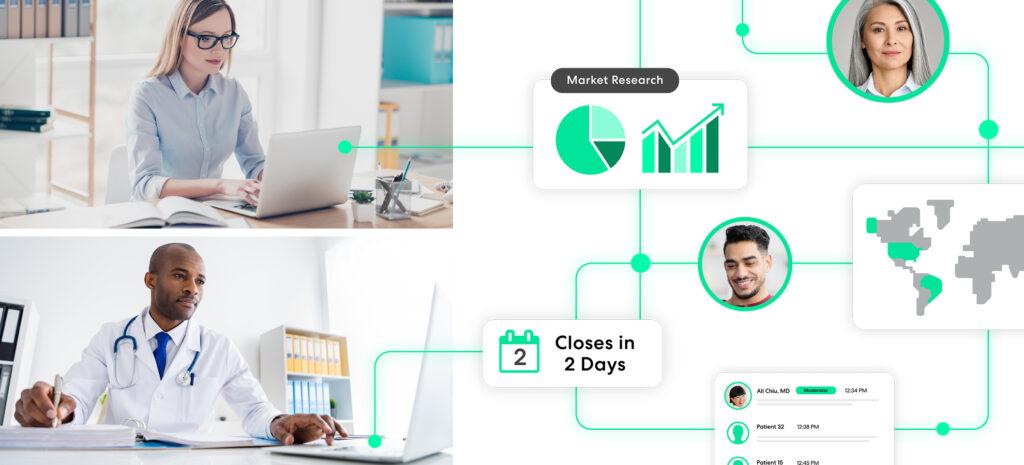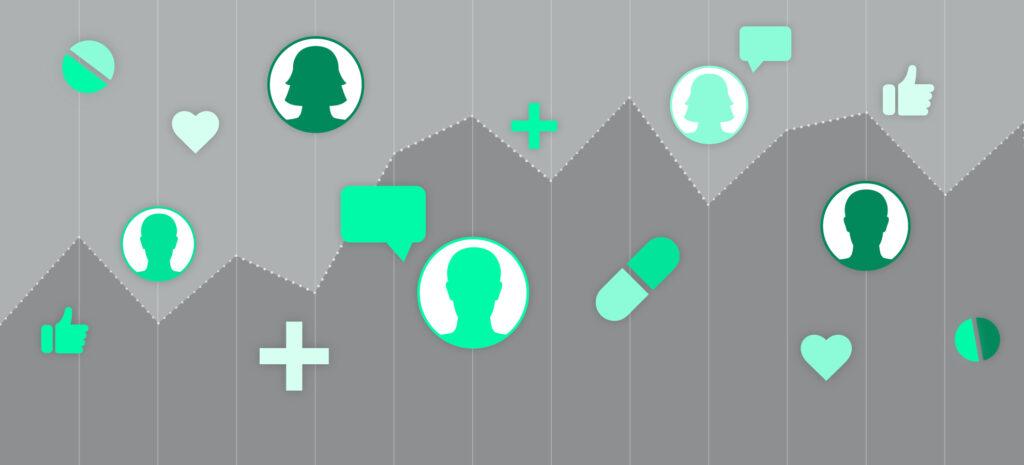Historically, there has been an understandable reticence among life science companies to fully embrace digital transformation. Issues such as compliance, cost, and time pressures have all contributed to a slower-than-average pace of technological adoption when contrasted with other industries.
“Life science companies have not traditionally been early adopters of new technologies.” – Deloitte
But if that statement is true of life science companies, then it’s equally so of patients. Prior to the COVID-19 pandemic, consumer use of digital health management tools had leveled out or even decreased – with the number of digital health users falling by 8% between 2018 and 2020. Consumer trends are the drivers of corporate behavior, and with little appetite from patients to adopt digital health tools, there was minimal pressure for life science companies to do likewise.
The COVID-19 catalyst
While no one would argue that the COVID-19 pandemic has been a force for good, in the life science sector at least it has proven an agent of change. The restrictions imposed by the pandemic meant that patients and providers alike were forced to set historic reticence aside, and embrace telehealth and other digital tools. With in-person visits suddenly rendered unsafe or impractical, both HCPs and patients had little choice but to experiment with virtual engagement – and to make it work for them.
“Traditionally, industry leaders have been skeptical of considering best practices from outside the sector. However, the urgency created by the pandemic made them leapfrog the barrier and achieve operational efficiency.” – CNBC
Overnight, the arguments against digital transformation were largely invalidated by the effects of the pandemic. And soon enough, the benefits of digital health technologies were clear for all to see. For life science teams, those benefits included greater operational efficiency, enhanced clinical trial enrollment and retention rates, and of course prioritized patient and practitioner safety. For patients, there’s the convenience of being able to book consultations at a time and place that works with their busy schedules, without having to invest time and effort into making clinical visits. Minimizing the risk of infection is of course a priority for patients, too.
For life science, the pandemic changed everything.
Embracing telehealth
Initially, patients were as reluctant to fully embrace telehealth as HCPs. Data privacy concerns were chief among those initial barriers to adoption. A recent study by Accenture revealed that data privacy and security remain important to 54% of respondents, while 64% believe they should have a right to approve any additional uses of PHI beyond their treatment. Ultimately, however, telehealth emerged as a necessity during the pandemic. And patients were quick to take it to heart, with the ability to administer treatments from home and monitor conditions via smart devices among the most valued features.
“Patients embraced virtual care and want to continue it. 9/10 felt care was as good or better than before.” – Accenture
Virtual care is improving the patient experience, and the industry is benefitting from digital transformation too. According to a report by the journal Nature, 74% of scientists think that scientific meetings should continue to be virtual – or have a virtual component – even after the pandemic ends.
If the pandemic proved the catalyst for change, its advances in technology that have ensured digital transformation is no passing trend. Faster, more reliable internet connections, the proliferation of smart devices with high-quality video capabilities, and the development of secure, compliant virtual engagement platforms have made telehealth and other means of digital health interaction both seamless and sustainable.
Changing patient expectations
Consumers may have been slow to adopt digital health tools, but they’ve since become integral to the patient experience. Patients now expect access to telehealth services as a matter of course, augmenting in-person care even in a post-pandemic world. Furthermore, they also expect the ability to use digital tools to manage additional aspects of their health – and it’s up to life science companies to provide those tools.
“Digital transformation is no longer a buzzword – it’s a strategic imperative.” – Deloitte
Life science companies are already beginning to use virtual engagement technologies across the product development process. Extending this to patients should not be seen as a challenge but as an opportunity. The wider adoption of telehealth has paved the way for other digital technologies that allow for greater patient-centricity – and when patients win, so do life science companies.
“The US healthcare system broadly has an immense opportunity to provide a better customer experience by using technology to be more efficient.” – Brad Michel, Accenture, via Outsourcing Pharma
Telehealth is at the vanguard of virtual technologies putting patient-centricity at the heart of life science, but it’s just one aspect of how digital transformation can enhance efficiency, add value, and improve the patient experience. Virtual engagement platforms like Within3 Connect can deliver the myriad benefits of virtual patient engagement while connecting life science companies with a far greater volume and quality of insights. To find out more about how insights management can help enhance patient centricity and support digital transformation, read our Best Practice Guide: Insights Management and Virtual Patient Engagement.






